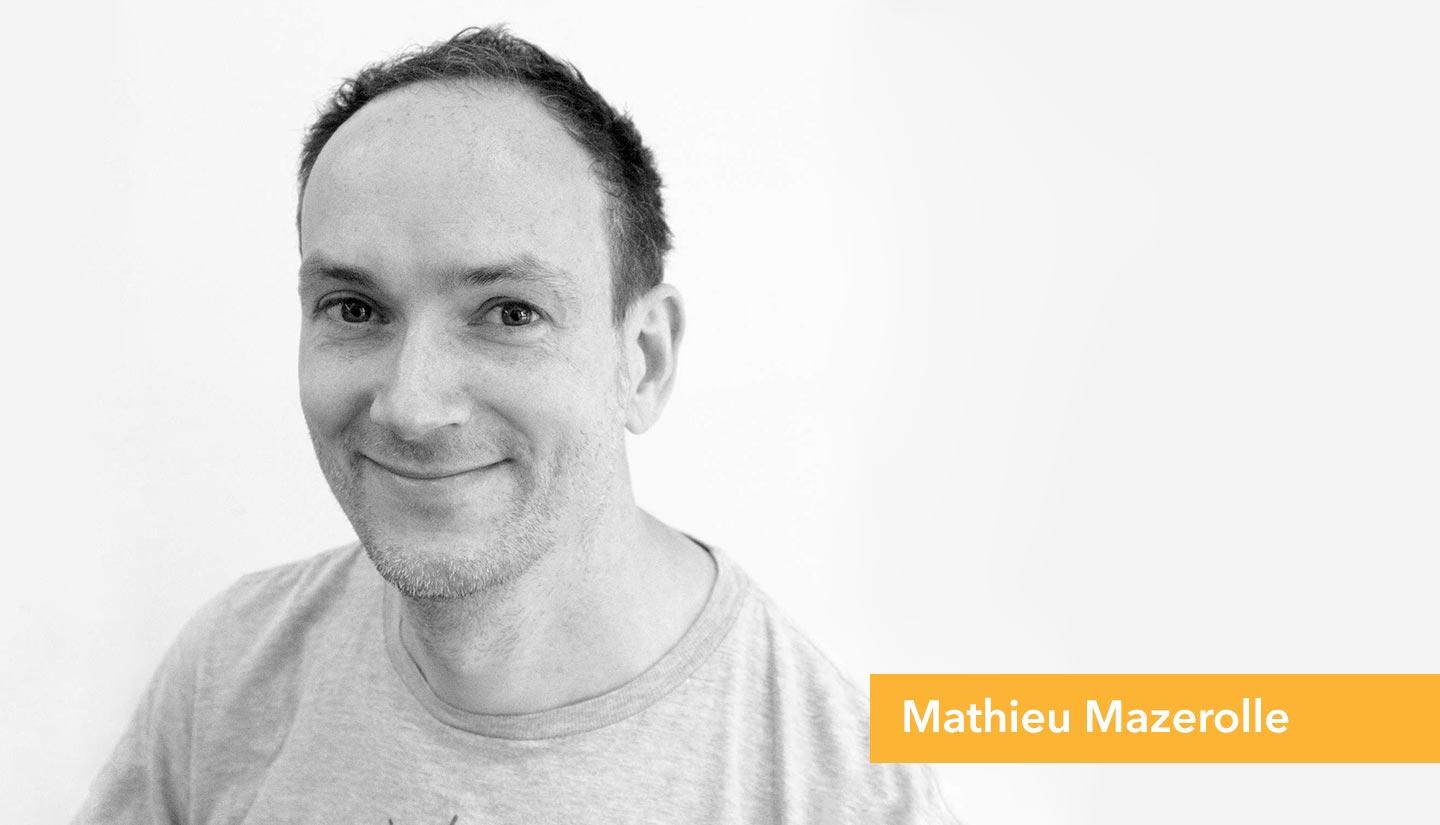Roundtable discussion: cloud technology and the VFX industry.
Cloud technology’s impact on the VFX industry
With the launch of Athera behind them (this past April at FMX in Stuttgart, Germany), the Foundry team faces the next step in the ambitious goal to provide VFX studios with an end-to-end cloud services solution - the job of attracting users to the platform.
In theory, it should be an easy sell for a technology three years of rigorous beta testing in the making, partnered with Google, and generating industry buzz as the tool with the potential to revolutionize VFX workflows.
Athera’s earliest users have been quick to offer up enthusiastic reviews, confirming advantages Foundry says the platform can bring to the table for freelancers and smaller studios in particular.
Athera allows for an unprecedented level of flexibility, enabling freelancers to work from wherever they want, accessing top industry tools as needed with each new job (currently including Nuke, Katana, Modo, Mari, Cara VR, Houdini and Blender, with more to come) - all using little more than a basic laptop and a web browser.
With everything on the cloud, a studio can reduce hardware investment costs, while benefiting from Athera’s on-demand charging approach (access to applications paid for in one month blocks, rendering time by the second), which allows a user to scale budget up or down depending on project demands.
Add to that the opportunity to work with multiple top quality artists from around the world without ever having to deal with the cost and visa hassles of re-location - and the result is a practical, cost-effective opportunity for smaller players to produce content quality at a level previously only to be expected from the big studios.
Yet for all of these benefits, Foundry faces a challenge in convincing sign-ons in these early days - not so much due to perceptions about Athera itself as to a lack of awareness on VFX in the cloud in general, persistently bogged down by misconceptions and fears over security, lag time, and cost effectiveness.
Misinformation causes would-be users to wonder if it’s worth taking the leap; even those with a solid grasp of the technology might still find themselves asking: “Why would I ever really need to crossover to the cloud?”
With these think points in mind, a group of industry experts within their own respective fields came together for a roundtable discussion- with Athera senior product manager Mathieu Mazerolle as moderator - to grapple over the future of VFX in the cloud.
Topics on the agenda: current industry perceptions on cloud, Athera’s early lifecycle obstacles, suggestions for improvements, and the contemplation of a core question: “What exactly will it take to make Athera a mainstay in the industry?”

Panelist overview:
Mathieu Mazerolle: Athera product manager at Foundry (round table moderator)
Anais Torreblanca: Compositor at Foundry on the Athera team.
Arvind Sond: Director and founder of Inversion Studio
One of Foundry’s first clients to test Athera at the start of beta testing.
Jordi Bares: Creative director, advertising, at Framestore
One of Athera’s first beta testers.
Courtney Pryce: Freelance Nuke compositor/digital artist, and early beta tester of Athera
Jeff Kember: Technical director, media, office of the CTO at Google (cloud solutions architect).
Craig Zerouni: Global head of technology for Method Studios

Roundtable Discussion:
On educating potential users about security
“Some hand-holding is required in order to get there and that’s probably something you need to build into the schedule.”
Jeff Kember, Office of the CTO, Google
Mat: Jeff, from your POV in Google, how has the standardization of things around security and resiliency on cloud storage affected people’s perception of cloud in the VFX industry?
Jeff: From a security standpoint, having the approval of the 6 major studios – the fact that we have eyes to the audit that allows us to run tier 1 content - has solved a lot of problems for us. It means we can run Marvel content, and content in general, from Fox and the other studios.
We see that as soon as people are using cloud, what they’re finding is that they’re able to get the same amount of work – the same cost. So what they could get in two days or four, they can now get it back in 8-12 hours, or overnight. I just want to point out that economy.
Courtney: I find that as much as the technology is moving forward, there’s still a resistance from the client side from people probably less “tech aware”. There’s a bit of resistance to actually wanting to have data on the cloud.
There are some companies that will probably never want it completely, and it will require more education to break down that barrier.
Arvind: Yeah, I would completely agree with that.
Jeff: So I’m spending a lot of time with broadcast customers and what we find is that it’s very much, each day, an educational process. So we walk through how we were able to achieve the approval from the studios and what the audits cover and then go through in more detail how the security works. And after we do the full education process, anyone we go through that process with signs on and away we go. We haven’t had anyone who refused moving to our cloud after that process.
So I completely agree there’s lots of work to be done in the educational area and that some hand-holding is required in order to get there and that’s probably something you need to build into the schedule.
Craig: I think there’s still a gap – take the statement that all 6 studios have signed off with Google. That may be true in theory, but in practice, it’s still the case that we have to go to individual projects and individual producers, even if they’re for the same studio we’ve previously used cloud for, and say ”is it OK if we do this?” There’s a whole other layer of security paranoia that still makes this challenging.
Jeff: Agreed – I didn’t want to suggest that it was a slam-dunk magic wand at this point. Everything is still per project, per studio.
Mat: It’s almost like the industry has a fault line where security considerations are very high from the high end, but at the same time we opened up this idea of fragmentation where lots of small players are just kind of avoiding all of those issues and just getting on with it and using cloud in very practical ways. How do you see that playing out in the industry from the freelance individuals, contrasted with the larger players?
Arvind: I think as Jeff said earlier, there’s definitely a little bit of hand holding that needs to happen, because I think there’s a lot of trepidation. I’ve been speaking to clients sometimes and you’ll mention the word “cloud” and their eyes just roll over, like “Oh, God, they’re using the cloud.” And then you basically try to educate them as best you can in terms of how secure it can be - plus the advantages in cost and the fact that they’re still able to utilize all this talent.
So I believe there’s still a lot of learning to do with certain higher end clients. There really is a learning curve that will have to happen, and as content starts getting produced and audiences see “oh, that’s really good content. It’s got Hollywood style visual effects” – then it will force people to rethink workflows and processes in a positive way.
Jordi: My perception is that some (small) studios are happy to say “we may not need that extra level of security for these little things, let’s do it anyway and that’s it”, and I imagine that they will be the easiest to catch as cloud users, because at the end of the day the cost of a space in Soho is humongous – an office in Paris is very expensive as well. And having people distributed is actually really convenient because you get the right talent. It’s as simple as that.

On flexibility and cost-effectiveness
“You suddenly get access to this massive talent pool and the costs are still very competitive.”
Arvind Sond, Inversion Studio
Mat: With the mobility that’s available today, and how that plays out in contrast to the mega-centres of artists in Montreal and Vancouver for example, how do you think that’s affecting the industry, and how do you think it’s affecting people’s connection to cloud technology?
Anais: I think one of the key things that cloud technology brings is more flexibility. The fact that you can work from your home, obviously, but also from a different country – I think that it just brings more skilled people into the market. When you can compete with the whole world, not just a city - the level of skill that a company can gain is tremendous.
Arvind: (on his cloud-based VFX studio, Inversion) As we’re growing, we’re building our client side and we’ve had some really interesting responses from different producers and clients. we’ve had some people approach us and say “We’ll totally take package B if it brings our costs down“ - and that’s with us utilizing artists from all over the world.
And we’ve had amazing artists come out of the woodwork - really good artists, when you look at their show reel - and also VFX artists from current studios just contacting us out of the blue saying “Look, I’m sick and tired of moving, I’ve got a family I don’t really want to move, I don’t want to keep bouncing around.” Or I’ve had an artist in Russia say “I’d love to come and work on this job (in X), but nobody wants to pay my visa fees to come over” and things like that. So you suddenly get access to this massive global talent pool and the costs are still very competitive.
Mat: Do we think there’s going to be a gap in terms of those who adopt early and those who don’t?
Anais: I think that right now there’s going to be a chance for those smaller studios to try to adapt the workload to the product. Because the big studios, it will obviously take them more time to change…but I think that it could be something really interesting for a few newer studios.
Mat: Craig, how are you seeing the movement towards cloud into larger studios at scale? Is it more of a piecemeal approach, or are larger studios forming long-term strategies that are taking cloud into account as part of their long-term technology planning?
Craig: It is slower because you have to take into account that you have multiple studios and you can’t just do everything at once.
But what I will volunteer is that we’re already making decisions to avoid spending budget that had been planned for CapEx and instead use it as an OpEX model to use it for cloud rendering, We’re taking that approach on two different projects right now for two different studios. So it’s happening, and it’s we’re really thinking about “how this plays into a larger discussion about storage” People are starting to offer storage as a service - How does that fit into this model? For us, it’s not just a “oh, look we can work over here, let’s do that”, it’s more about what the strategy is to use other people’s hardware, and how we can be a little more nimble
On improvements required and challenges ahead
“I think the fact that all the software an artist might use isn’t on the cloud…means for me to go on cloud, I’d need to have a very compelling and priced out project to include that as part of the production process.”
Courtney Pryce, Freelance Compositor
Mat: What do you think some of the big problems are that we still need to crack in order to make cloud something that is current and status quo in the industry?
Anais: I think that cloud rendering is out there, and that’s the present of VFX- but the more VFX creeps onto new technology like virtual reality, the more you will need skilled people – and the more software you’ll need if you want to work with them. That and I think the education, because people are still scared about using cloud tech.
Courtney: In terms of a barrier for freelancers, I think the fact all the software an artist might use isn’t on the cloud yet means they would still need offline machines or offline software that they would have to pay for as well, and that almost makes the cloud software an extra added cost, which has to be considered. And I think that in itself for smaller startups is a barrier that they would have to consider.
I think for an artist like myself, that means for me to go on cloud, I’d need to have a very compelling and priced out project to include that as part of the production process.
Craig: So the initial model of this is that there’s some compute resources somewhere else and the barrier there- apart from all the security stuff and everything else- is just getting the data to and from those places. That’s still an issue, but it’s less of one…when you’re talking about hundreds of shots with terabytes of data going out and then terabytes of data coming back, that in itself is a barrier and avoiding those transfers is the next stage of development.
Courtney: So if everyone’s working remote… not having a consistent unified language and not be in on the same time zone, it’s quite difficult to make sure that the vision is executed by the same people or that everyone is on the same page at the same time.
That [team communication] kind of needs to be incorporated into this whole process, because doing the work is one thing, but just communication itself is another kind of difficult challenge that needs to bridge the gap in order to make it a more feasible option.
Jordi: I think when you work in the traditional way, and synchronize, you overload the production and logistics massively so it becomes a bottleneck just talking about what you need to do – so having the cloud makes a lot of sense. But it’s true there are a lot of barriers in terms of cost perception, in terms of security, in terms of “what does it bring to the party that we don’t have” and obviously it’s a bit of an investment– and I imagine some of the small boutique players are going to have to show us the way, to be honest.
Craig: The communication thing, that’s a real thing – because the way this stuff gets talked about is that there’s this underlying assumption that it’s a natural, good thing that people can be spread out all over the world working from their basements or whatever, but there’s no doubt in my mind that having everybody in one room, in one building is way more efficient in terms of just communicating about how to get this thing from here to there, what it’s supposed to be.
Arvind: Absolutely, there always has to be that core team locally that are making the major decisions – but a lot of the work can get sent out to amazing experienced artists around the world. So it’s about correctly managing the project internally, and then sending out the right parts of the work globally.

On the future of VFX in the cloud
“The idea of being able to move all the compute-intense workload to the cloud and being able to seamlessly switch between CPU and GPU and whatever you want depending on the show and production needs - I think that’s the flexibility I’m looking at in the next two years.”
Jeff Kember, Office of the CTO, Google
Mat: Let’s talk about the future. Jeff, what do you think the next five years brings for cloud, for post-production? I’m just really curious about your long-term view on this, given that you’re in the thick of it.
Jeff: What I would probably do is try and reduce the scope from five years down to two years, because I honestly think anything beyond that feels a little ‘crystal ball’. But the next things that we’re looking at are moving uptake into remote desktops, and that’s where Athera comes in and the idea of being able to have an entire pipeline completely remote - so you have a facility that stands up, and it doesn’t have to be geographically co-located with the compute or the artist teams.
I really do think the remote desktop is kind of the big key of what’s missing in order to be able to put that compute center in the workstation and keep that data remotely. So that everything is in one place or it’s running on a backbone on another network that you don’t have to worry about.
So the idea of being able to move all the compute-intense workload to the cloud and being able to seamlessly switch between CPU and GPU and whatever you want depending on the show and production needs - I think that’s the flexibility I’m looking at in the next two years.
To learn more on Athera or to request an immediate 30-day trial visit the product website here


